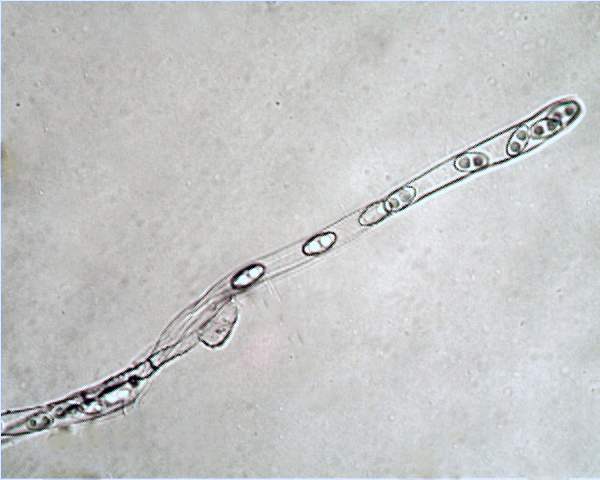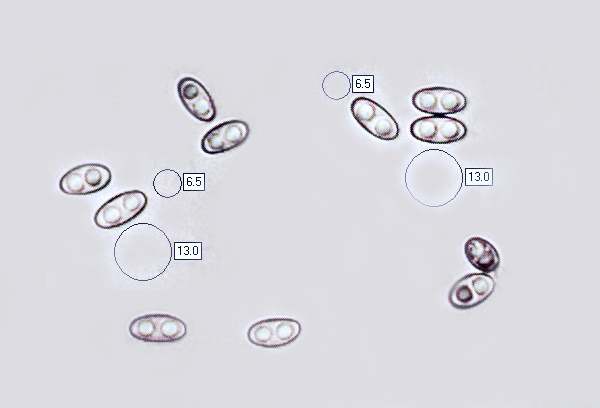Otidea onotica (Pers.) Fuckel - Hare's Ear
Phylum: Ascomycota - Class: Pezizomycetes - Order: Pezizales - Family: Pyronemataceae
Distribution - Taxonomic History - Etymology - Identification - Culinary Notes - Reference Sources
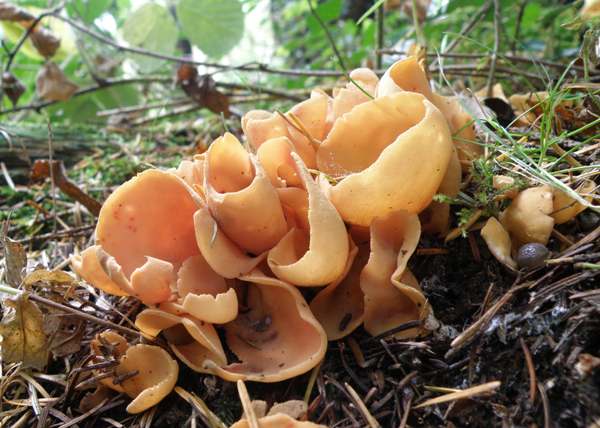
Only an occasional find in broadleaf and mixed woodland, the Hare’s Ear fungus often fruits in small clustered groups, as shown here. Its conspicuously bright colour makes this an easy-to-spot fungus despite its moderate size.
There is something special about footpaths through woods that suits these are other ear- and cup-like fungi. Perhaps the change in soil density due to compaction causes them to fruit right on the edges of such well-trodden tracks.
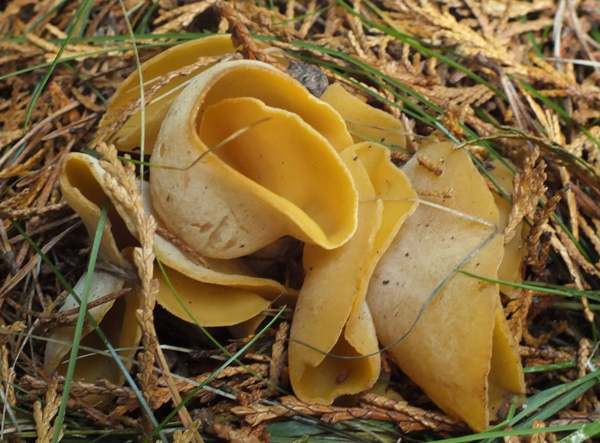
Distribution
Common and widespread throughout Britain and Ireland, particularly in broad woodlands but also occasionally beneath conifers in mixed woodlands, Otidea onotica is found throughout most of mainland Europe. Hare's Ear fungus occurs also in many parts of North America.
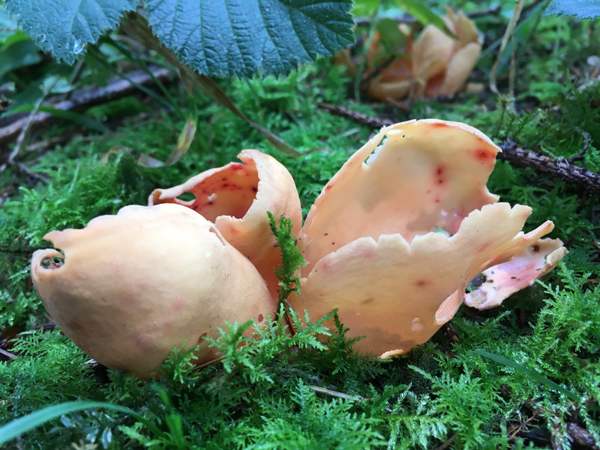
Taxonomic history
In 1801 when Christiaan Hendrik Persoon described this ascomycete fungus he gave it the binomial scientific name Peziza onitica. It was the German mycologist Karl Wilhelm Gottlieb Leopold Fuckel (1821 - 1876) who in 1870 transferred this species to the genus Otidea, renaming it Otidea onotica, its currently accepted scientific name.
Synonyms of Otidea onitica include Peziza onotica Pers., Pseudotis abietina (Pers.) Boud., and Scodellina onotica (Pers.) Gray.
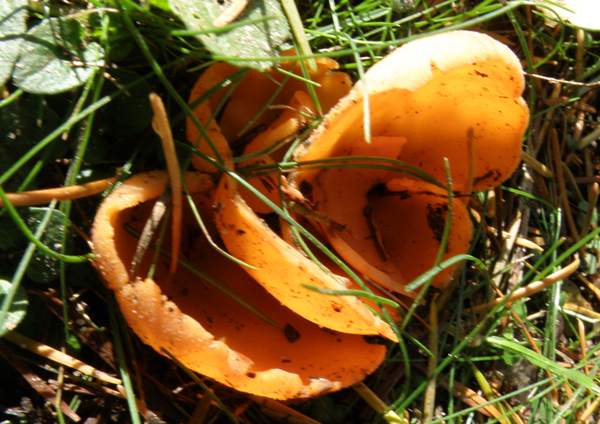
Etymology
The genus name Otidea is a reference to the ear-like form of fungi in this group, while the prefix ono- in the specific epithet onotica means donkey. Well, Donkey-ear Fungus seems to me no better or worse a descriptive term than Hare's Ear fungus. (Another of the common names used in the past when referring to this species is Lemon Peel Fungus.)
Identification guide
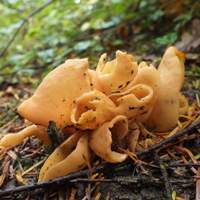 |
Fruitbody (apothecium)Elongated cup with a split down the shorter side and edges overlapping rather than merely abutting, with the margin slightly incurved. 3 to 9cm tall and 1.5 to 4cm across, with a whitish stem up to 1cm long. Inner (fertile) surface is smooth, light yellowish brown, often with a rosy tinge. Outer (infertile) surface is buff and slightly scurfy. |
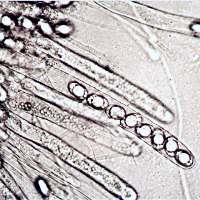 |
AsciEight spores per ascus. Asci are typically 170 x 11µm and interspersed with paraphyses that are long and narrow, often with curved tips. |
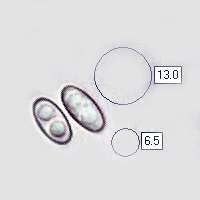 |
SporesEllipsoidal, smooth, 12-14 x 6-7µm, each generally containing two oil drops. Spore printWhite. |
Odour/taste |
Not distinctive |
Habitat & Ecological role |
Saprobic, in mossy broadleaf and mixed woodlands and woodland edges. |
Season |
June to November in Britain and Ireland. |
Similar species |
Otidea bufonia is a much darker brown and usually produces larger cups. |
Culinary Notes
Otidea onotica is generally regarded as inedible. In Wild Edible Fungi: A Global Overview of Their Use and Importance to People by E. R. Boa, this species is listed as being 'either edible or of medicinal value'.
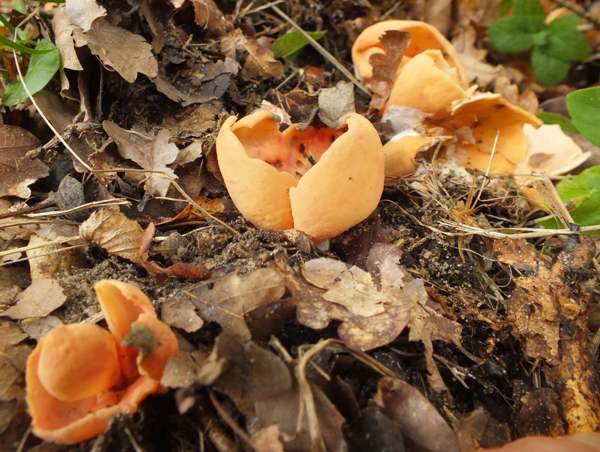
Reference Sources
Fascinated by Fungi, 2nd Edition, Pat O'Reilly 2016, reprinted by Coch-y-bonddu Books in 2022.
Dennis, R.W.G. (1981). British Ascomycetes; Lubrecht & Cramer; ISBN: 3768205525.
Boa, E R (2004). Wild Edible Fungi: A Global Overview of Their Use and Importance to People. FAO of the UN.
British Mycological Society (2010). English Names for Fungi
Dictionary of the Fungi; Paul M. Kirk, Paul F. Cannon, David W. Minter and J. A. Stalpers; CABI, 2008
Taxonomic history and synonym information on these pages is drawn from many sources but in particular from the British Mycological Society's GB Checklist of Fungi.
Acknowledgements
This page includes pictures kindly contributed by Simon Harding.
Fascinated by Fungi. Back by popular demand, Pat O'Reilly's best-selling 450-page hardback book is available now. The latest second edition was republished with a sparkling new cover design in September 2022 by Coch-y-Bonddu Books. Full details and copies are available from the publisher's online bookshop...
